Hunting in Alaska is becoming increasingly popular among sportsmen and women all over America. This majestic land has been home to many a hunter for centuries, as its vast acreage offers plenty of areas for the average traveler to explore, with some of the best scenery nature has gifted us with as an added bonus. But before you make plans to hit the great Alaskan outdoors with your gun or bow, there are certain requirements and precautions that one must take into consideration before embarking on the adventure of a lifetime.
In terms of climate, hunting in Alaska can range anywhere from late July until late October, although if you’re looking for something more extreme weather can become a factor during certain times of year or respective regions within the huge state.
The most important thing when it comes down to planning a successful trip is determining what type of animal you’d like to target during your stay and then doing research on that species’ native ranges and respective seasons.
In this guide, we will cover everything you need to know about hunting in Alaska. We will go over what to hunt, where to hunt, hunting regulations, licenses, hunting seasons, and much more.
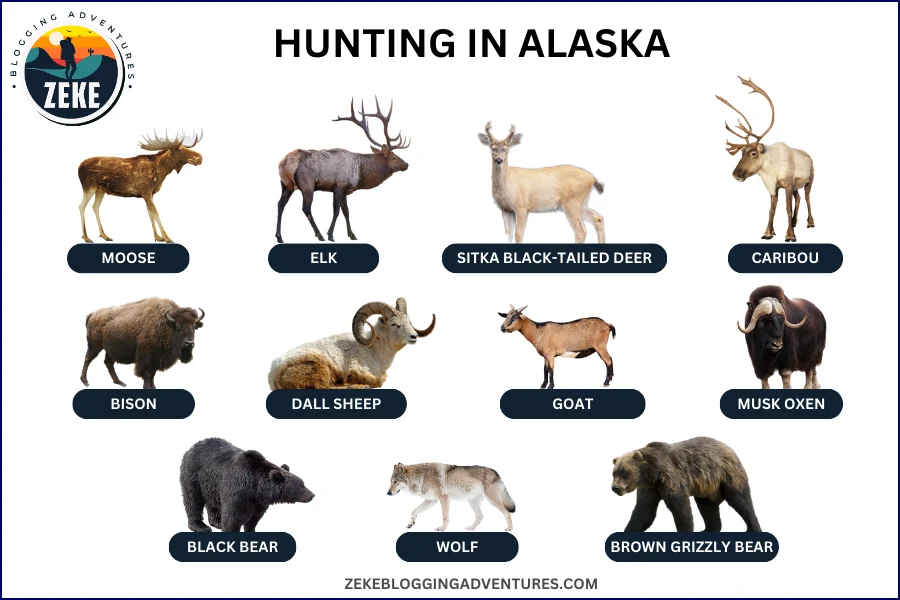
What Can You Hunt in Alaska?
Alaska is home to numerous species of game animals. The most popular types of animals hunted in Alaska are Bear (black & grizzly), moose (Alaska-Yukon), caribou (barren ground & woodland), elk, white-tailed deer (Sitka black-tailed), mountain goats, Dall sheep, muskoxen, bison, waterfowl and wolf (mountain & arctic). Each region has its own unique form of wildlife which makes hunting a truly special experience in the state.
Sitka Black-tailed Deer
Sitka Black–tailed Deer Hunting in Alaska is becoming increasingly popular among hunters from all over the country. Appropriately named for their dark, black–colored tails, these deer can be found inhabiting coastal regions of the Southeast Alaskan Islands and are a favorite among hunters due to their active and curious nature.
Hunters should look for areas with open trails, fields, and densely vegetated thickets as these are prime habitats for the Sitka Black–tailed deer. For successful hunting trips, gear such as scopes, binoculars, camouflage clothes, light backpacks, and athletic shoes will help you to capture a big trophy.
Hunting season in Alaska is unique in comparison to other states; the opening dates for deer hunting vary depending on which area or unit you plan to hunt. From early August through October, archery, crossbow, and muzzleloader weapon-restricted hunts are available depending on the zone. You can choose between bagging bucks or does – with a limit of course. So if you’re looking for an unforgettable experience this year, then don’t forget about Alaskan deer season!
Sitka Deer Hunting Season in Alaska
| Unit | Deer Species | Dates |
| 1C, 1D | Sitka Black-tailed Deer | Aug 01 – Dec 31 |
| 2 | Sitka Black-tailed Deer | Aug 01 – Dec 31 |
| 3 | Sitka Black-tailed Deer | Aug 01 – Dec 31 |
| 4 | Sitka Black-tailed Deer | Aug 01 – Dec 31 |
| 5 | Sitka Black-tailed Deer | Aug 01 – Dec 31 |
| 6C, 6D | Sitka Black-tailed Deer | Aug 01 – Dec 31 |
| 8 | Sitka Black-tailed Deer | Aug 01 – Dec 31 |
| 11 | Mule Deer | Aug 1 – Sep 20, Nov 20 – Dec 15 |
| 13D | Mule Deer | Aug 1 – Sep 20, Nov 20 – Dec 15 |
| 14A, 14B | Mule Deer | Aug 10 – Nov 30 |
| 14C | Mule Deer | Aug 10 – Nov 30 |
| 15-17, 20, 22, 23, 25A | Mule Deer | Aug 01 – Dec 31 |
| 18, 19, 21, 24, 25B-E | Mule Deer | Aug 01 – Dec 31 |
| 20E | Mule Deer | Sep 01 – Nov 27 |
| 26A | Mule Deer | Sep 01 – Nov 27 |
Caribou
Caribou are an impressive species of deer that inhabit regions ranging from the arctic tundra to the northern forests of North America, Russia, and Scandinavia. These animals have concave hooves that act as paddles in water for when they travel through soft terrain like snow or marshland.
They’re also known as reindeer by some but only domesticated caribou can be called this in Alaska and Canada. Not only do these majestic creatures provide us with a stunning view, but they also play an important role in their ecosystems.
Caribou Season in Alaska
| Unit | Dates | Bag Limit |
| 6C, 6D | Aug 10 – Sep 30 | 1 Caribou |
| 8 | Aug 01 – Mar 31 | 1 Caribou |
| 9A, 9B, 17A, 17B, 17C | Aug 01 – Mar 31 | 2 Caribou |
| 9C, 9E | Aug 10 – Oct 31 | 1 Caribou |
| 11 | Aug 01- Sep 30, Feb 01 – Apr 30 | 1 Caribou |
| 12 | Aug 01 – Sep 30, Oct 21- Mar 31 | 1 Caribou |
| 13A, 13B, 13C, 13D | July 01 – June 30 | 1 Caribou |
| 13D remainder, 14A, 14B | Aug 1- Sept 30, Jan 1 – Feb 28 | 1 Caribou |
| 15A, 15B | Aug 10 – Oct 15 | 1 Caribou |
| 15C, 15D | Aug 10 – Mar 31 | 1 Caribou |
| 16A, 16B, 20F, 21A, 21E, 24A, 24B, 24C, 24D | July 01 – Mar 31 | 5 Caribou per day |
| 18, 19A, 19D-West, 21B, 21C, 21D, 23, 25A, 25D | July 01 – Mar 31 | 10 Caribou per day |
| 19A-West, 19C, 19D-East | July 01 – Apr 30 | 10 Caribou per day |
| 19B, 22A-C | July 01 – Mar 31 | 10 Caribou per day |
| 22D, 22E | Open Season | 20 Caribou per day |
| 26A | July 01 – June 30 | 5 Caribou per day |
Elk
Alaska is home to two species of elk that have been transplanted from other regions; Roosevelt and Rocky Mountain Elk. Found in small groups throughout Southeast Alaska, the largest population can be found on Afognak and Raspberry Islands near Kodiak. Hunting these animals requires a drawing permit.
Elk Season in Alaska
| Unit | Dates | Bag Limit |
| 6B, 6C, 11, 13E, 14A1 14B, 14C, 15B, 15C | Aug 20 – Sep 30 | 01 Bull |
| 16A | Aug 01 – Nov 30 | 01 Bull |
| 19, 20A | Aug 20 – Sep 30 | 01 Bull |
| 20B, 20C, 20D | Aug 15 – Sep 14 | 01 Bull |
| 20E | Aug 25 – Sep 20 | 01 Bull |
| 21A, 21D, 21E | Aug 15 – Sep 14 | 01 Bull |
| 24B | Aug 10 – Oct 15 | 01 Bull |
| 24C | Aug 15 – Sep 14 | 01 Bull |
| 25D | Aug 01 – Sep 14 | 01 Bull |
Bison
Traceable back to the Ice Age, the American Bison looms large in Alaska‘s history. Though once abundant, hunting pressure and climate change resulted in them facing near extinction just a hundred years ago. Current efforts are devoted to restoring wood bison populations, but until then hunters can still track plains bison in certain areas of Alaska such as Delta Junction and Farewell.
Hunting these majestic creatures requires obtaining a drawing permit when on public land, or visiting local ranches and preserves for fee–based shooting opportunities.
Bison Season Alaska
| Unit | Dates | Bag Limit |
| 6B, 6C, 20C | Sep 01 – Mar 31 | 1 Bison every ten years |
| 11, 13E, 19D, 20A, 20B, 20D, 20E, 20F | Aug 01 – Mar 31 | 1 Bison every ten years |
| 21D, 24 | Aug 01 – Mar 31 | 1 Bison every ten years |
| 25D | Aug 01, Apr 14 | 1 Bison every ten years |
Dall Sheep
For an unforgettable hunting experience, Dall Sheep stalking in Alaska is a must. Found deep within the wildest corners of North America, these majestic creatures provide a thrilling challenge for any hunter brave enough to pursue them. Usually occurring between August 10th and September, experienced hunters should be sure to plan for what can be quite an arduous journey.
To reap the rewards of this expedition requires persistence and grit – but those who successfully hunt down their quarry will undoubtedly feel the immense pride that encapsulates everything wild about nature.
Dall Sheep Season
| Unit | Dates | Bag Limit |
| 1C, 1D, 1, 2, 4, 15A | Aug 10 – Oct 15 | 1 Ram |
| 3, 8, 15B, 15C, 15D, 16A | Aug 10 – Sep 20 | 1 Ram |
| 21A, 24A, 24B, 25A, 25D, 20A, 20B, 20C, 20F, 20D, 20E, 22 | Aug 10 – Sep 20 | 1 Ram |
| 23, 26A | July 15 – Dec 31 | 1 Ram |
| 26B | Aug 10, Apr 30 | 1 Ram |
| 6A, 6B, 6C, 6D, 9 | Aug 10 – Oct 5 | 1 Ram |
Moose
After Bison, Moose is the 2nd largest land mammal in the USA. Hunting them is an exciting and challenging experience. Spotting bulls can be done easily by glassing from various locations or simulating antler scraping and brush-thrashing during the pre-rut period. However, the density of moose can be very low (.25 per square mile or less) and accessing them in boggy areas is difficult.
Once you’ve harvested a bull, hauling it from the woods can also be difficult as it must often to broken down into smaller pieces for packing out – usually to a raft or base camp, from which it is then flown away. Despite all the challenges, moose hunting is something many hunters eagerly anticipate and enjoy.
Moose Season Alaska
| Unit | Dates | Bag Limit |
| 1C | Aug 22 – Aug 29 | 1 Bull |
| 1C, 1D, 1, 2, 4, 8, 9A, 9B, 9D, 9E, 11 | Sep 01 – Sep 25 | 1 Bull |
| 14A, 14B, 14C, 20A, 20F | Sep 01 – Sep 25 | 1 Bull |
| 3, 15A, 15B, 19A, 19B, 19C | Sep 01 – Sep 20 | 1 Bull |
| 5B | Nov 15 – Nov 30 | 1 Bull |
| 5C, 17A, 17B, 24A, 24B | Aug 25 – Sep 25 | 1 Bull |
| 6A, 6B, 6C, 6D, 13A, 13B, 25D | Aug 20 – Sep 25 | 1 Bull |
| 16A, 16B, 20C | Sep 01 – Sep 15 | 1 Bull |
| 21A, 21C | Sep 05 – Sep 25 | 1 Bull |
| 9C, 20E, 22A, 22B, 22C, 22D, 22E | Sept 01- Sep 30 | 1 Bull |
| 23, 26A | Jul 01 – Apr 30 | 1 Bull |
Musk Oxen
Muskoxen are an iconic animal in Alaska and a reminder of the wild beauty of this state. Despite being hunted to near extinction in the 1800s, these animals were successfully reintroduced to Alaska in the 1930s thanks to an effort from the territorial government and Congress. Nowadays, muskoxen can be found in a few limited areas but require hunters to acquire a permit through drawing for legal hunting.
With a success rate that continues decades later, hunting for muskoxen is becoming increasingly popular amongst hunters looking for something unique and exotic.
Musk Oxen Season
| Unit | Dates | Bag Limit |
| 18 | Aug 01 – Sep 30 | 1 Bull |
| 19A, 19B, 19D, 20A, 20B, 20D, 20E, 20F | Aug 01 – Mar 31 | 1 Bull |
| 21C, 21D, 24, 24A, 24B, 25A, 26A | Aug 01 – Mar 31 | 1 Bull |
| 20C | Sep 01 – Mar 31 | 1 Bull |
| 22E | Aug 01 – Mar 15 | 1 Bull |
| 23 | Aug 01 – Apr 15 | 1 Bull |
Goat
The Rocky Mountain Goat is undeniably an extraordinary member of the mountain game. It’s not a true goat but actually part of the Antelope family. Unlike sheep, goats are more composed and take refuge in steep terrain when faced with danger – usually providing enough protection from predators.
Both males and females have horns that can make it difficult for hunters to tell them apart; however, sound game management suggests a selective harvest of older males should be done to keep population numbers stable for huntable purposes.
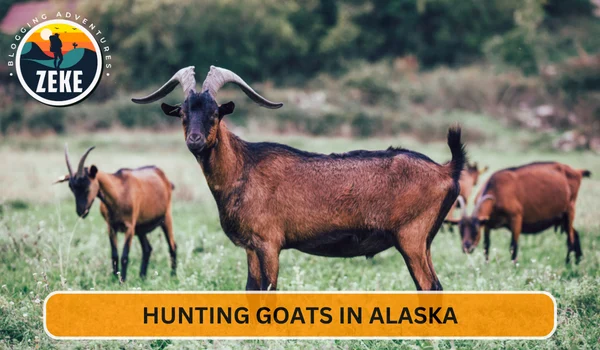
Goat Season
| Unit | Dates | Bag Limit |
| 1C, 1D, 2, 3, 4, 5 | Aug 20 – Jan 31 | 1 goat |
| 6A, 6B, 6C, 6D, 8A, 9A, 9B, 9C, 9D, 9E | Aug 10 – Jan 31 | 1 goat |
| 18, 19AD, 24A, 24B, 26A, 26B | Aug 10 – Jan 31 | 1 goat |
| 7 | Aug 10 – Nov 14 | 1 goat |
| 15A, 15B, 15C, 25A | Aug 10 – Oct 15 | 1 goat |
Black Bear
Black bears are some of the most commonly hunted game species in Alaska. These animals inhabit almost every corner of the state, from the temperate rainforests of Southeast Alaska to the coastal tundra along its western coast. Black bear hunting offers an exciting adventure for hunters of all skill levels – from novice to experienced.
The key is preparation: Being knowledgeable about local regulations, understanding bear behavior and habitat preferences, selecting the right gear and practicing safety all come in to play when hunting black bear in Alaska.
Black bears can be taken by rifle, muzzleloader and archery depending on the area you are hunting in. In some cases, bait or dogs may also be used however this will vary by region so it’s important to check local regulations prior to any hunt.
Spot–and–stalk techniques are typically most effective as bears tend to move less during daylight hours and can be difficult to approach. When scouting for a black bear keep an eye out for feeding signs such as overturned logs or freshly disturbed vegetation which indicate a recent presence in an area.
Black Bear Season in Alaska
| Unit | Dates | Bag Limit |
| 1A, 1B, 1C, 1D, 2, 3, 8A, 14A, 14C, 22A-E | Sep 01 – Jun 30 | 1 bear |
| 11-13, 14B, 18-19, 20A, 20C, 20D, 20E, 20F, 21-26 | Sep 01 – Jun 30 | 2 bears |
| 4, 5 | Sep 15 – Dec 31, Mar 15- May 31 | 1 bear |
| 6A, 6B, 6C | Apr 15 – Jun 15 | 1 bear |
| 6D | Apr 15 – Jun 10 | 1 bear |
| 17 | Sep 01 – Aug 31 | 2 bears |
| 7 | Apr 15, Jun 30 | 1 bear |
| 15, 16, 20B, 21A, 21B, 21E | Sep 01- Jun 30 | 3 bears |
| 23, 24A, 24B, 25A, 25B, 25C | Sep 01- Jun 30 | 3 bears |
Brown Grizzly Bear
Amongst bear hunters, the difference between a brown and grizzly bear is well–known. Brown bears, which have ready access to salmon, tend to be much larger in size whilst grizzlies are typically found further inland. Skull size isn‘t necessarily an indication of size for bears since their body proportions can vary from one region to another. Thus, when it comes to determining the true size of a bear, many hunters rely on its physical form as a more reliable indicator. For brown bears, this number is typically around nine feet but reports of them growing up to twelve feet are not unheard of.
On the other hand, grizzlies usually measure from six to seven feet square when fully matured. Whatever the case may be, hunting for these animals offers many opportunities for stories that will last a lifetime.
For hunters, the Alaska Department of Fish and Game applies the same regulations when it comes to bear hunting regardless of whether they are brown or grizzly. Common weapons include rifles, muzzleloaders, and archery–with bait and dogs usually not allowed, except in certain predator control cases.
When it comes to harvesting bears, special attention is given to cubs as their taking is strictly prohibited and sows are discouraged. This helps to ensure that these magnificent animals are around for generations to come.
Brown Grizzly Bear Season
| Unit | Date | Bag Limit |
| 1A, 1B, 1D, 4, 5 | Sep 15 – Dec 31 | 1 bear every four years |
| 1C, 8A, 16B, 17A, 17B, 8 | Sep 15 – Dec 31 | 1 bear every year |
| 1B, 1C, 1D, 4 | Mar 15 – May 31 | 1 bear every four years |
| 6A, 6B, 6C, 9B, 9E, 20B, 26B | Sep 01 – May 31 | 1 bear every year |
| 12 | Sep 01 – May 20 | 1 bear every year |
| 13A-E, 14C, 20F, 22, 26A | Aug 10 – Jun 15 | 1 bear every year |
| 11, 14A, 14B, 15, 19A-D, 20A, 21A, 21B, 21C, 21D, 24A, 24B, 25A, 25D | Aug 10 – Jun 30 | 1 bear every year |
| 23 | Aug 10 – May 31 | 1 bear every year |
| 20E | Sep 01 – Oct 31 | 1 bear every year |
| 20C | Oct 15 – May 31 | 1 bear every year |
Wolf
Wolves are apex predators found across Alaska, but their highest populations reside in Regions 2-5. Their presence can have a notable effect on moose, caribou, Dall sheep, and other game species. You may hear wolves howling in the morning or evening hours – yet they’re notoriously difficult to hunt due to their intelligence and pack mentality. By the time you spot one of these elusive creatures, it’s most likely already seen you and is long gone!
If you want to be successful hunting in Alaska, then be prepared for quick appearances followed by rapid disappearances; as well as potential long-range shots if needed.
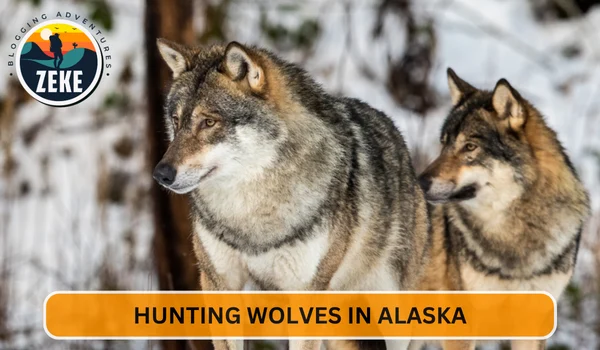
Wolf Season
| Unit | Dates | Bag Limit |
| 20A, 20B, 20C, 23, 25D | 10 Aug – 30 Apr | No Limit |
| 6-7, 9, 12, 14C, 15, 17 | 10 Aug – 30 Apr | Five Wolves |
| 1-5, 8-11, 13, 14A, 14B, 16, 18 – 26, 20D, 20E, 20F, 21, 24 | 10 Aug – 30 Apr | Ten Wolves |
Wolverine Season
| Unit | Dates | Bag Limit |
| 1-5, 8-11, 13, 16, 20-26 | Sep 01 – Feb 15 | One Wolverine |
| 6-7, 12-15, 17-19 | Sep 01 – Feb 15 | Two Wolverines |
| 9, 8, 20D, 20F, 25D | Sep 01-Mar 31 | One Wolverine |
| 23 | Nov 10 – Feb 15 | One Wolverine |
| 14C | Nov 10 – Feb 15 | Two Wolverines |
| 21, 24 | Sep 01 – Feb 28 | One Wolverine |
Pika Season
| Unit | Dates | Bag Limits |
| 12, 20E | Open Season | No Limit |
| 1–11, 13-19, 20A, 20B, 20C, 20D, 20F, 21-26 | Closed Season |
Crow Season
| Unit | Dates | Bag Limits |
| 1-9, 15 | Mar 01 – Apr 15 | 5 per day |
| 1-9, 15 | Sep 01 – Nov 17 | ——- |
| 10-4, 16-26 | Closed Season | ——- |
| Non-residents | Closed Season | ——- |
Hare Season
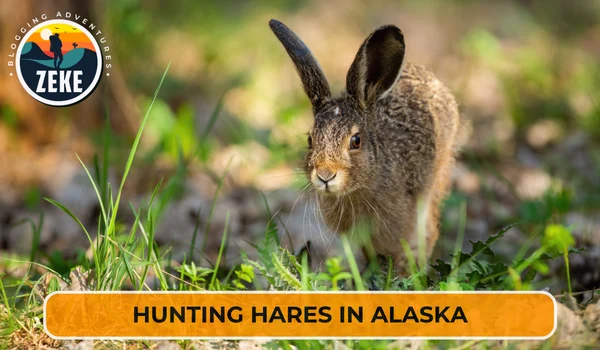
| Unit | Dates | Bag Limit |
| 1-5, 14C | Sep 01 – Apr 30 | 5 a day |
| 6-8, 10-13, 14B, 15-16 | Open Season | No limit |
| 9, 17 | Open Season | No limit |
| 9, 17 | Nov 01 – Jan 31 | 1 per day, 4 in total |
| 14A | Open Season | 5 a day |
| 19-21, 24-26 | Open Season | No limit |
| 18, 22, 23 | Open Season | No limit |
| 18, 22, 23 | Aug 31 – May 31 | 2 per day, 6 in total |
Ptarmigan Season
| Unit | Dates | Bag Limit |
| 15C | Aug 10 – Jan 31 | 5 per day |
| 6D, 7, 11, 13A, 13C, 13D | Aug 10 – Mar 31 | 10 per day |
| 13B, 13E | Aug 10 – Feb 15 | 10 per day |
| 14C | Aug 10 – Mar 31 | 10 per day |
| All units excluding 23, 26 | Aug 01 – May 15 | 20 per day |
| 24, 25A, 25B, 25D | Aug 10 – Apr 30 | 20 per day |
| 18 | Aug 10 – May 15 | 15 per day |
| 14A, 14B, 15A, 15B, 15C | Aug 10 – Mar 31 | 10 per day |
| 9 | Aug 10 – Feb 29 | 10 per day |
| 23, 26 | Aug 10 – Jun 15 | 50 per day |
| 8, 10, 17, 19, 21-22 | Aug 10 – Apr 30 | 20 per day |
Snowy Owl Season
| Units | Dates | Bag Limit |
| Non-residents | Closed season | ——- |
| 17, 18, 23, 22, 26 | Sep 01 – Apr 01 | No limit |
Grouse Season
| Units | Dates | Bag Limit |
| 7, 15 | Aug 10 – Mar 31 | 10 per day |
| 8, 10 | Closed season | ——- |
| 11, 12, 20, 25 | Aug 10 – Mar 31 | 15 per day |
| 9, 17, 18, 19, 21, 22, 23, 24, 26 | Aug 10 – Apr 30 | 15 per day |
| 13, 14A, 14B, 16 | Aug 10 – Mar 31 | 15 per day |
| 20D | Aug 25 – Mar 31 | 5 per day |
| 14C | Sep 01 – Mar 31 | 5 per day |
| Falcon hunt only | Aug 10 – Aug 24 | 10 per day |
Porcupine Season
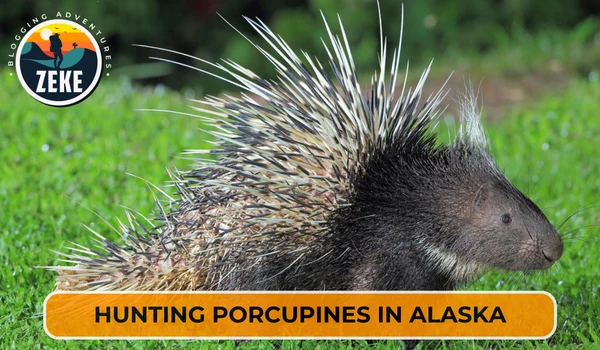
| Unit | Dates | Bag Limits |
| 1-26 | Open Season | No Limit |
Shrew & Mouse Season
| Unit | Dates | Bag Limits |
| 1-26 | Open Season | No Limit |
Fox Season
| Unit | Dates | Notes |
| 8 | Sep 01 – Feb 15 | Arctic fox only, 2 foxes bag limit |
| 9, 17-18, 22-23, 26 | Sep 01 – Apr 30 | Arctic fox only, 2 foxes bag limit |
| 10 | Open season | Arctic fox only, No Limit |
| 24, 25 | Sep 01 – Mar 15 | Arctic fox only, No Limit |
| 1, 2,3, 4, 5, 6, 7, 15 | Closed season | Red fox, no limit |
| 8, 9, 10, 14, 16, 17 | Sep 01 – Feb 15 | Red fox, 2 foxes bag limit |
| 11, 12, 13, 18, 19, 20, 21, 22. 23, 24, 25, 26 | Sep 01 – Mar 15 | Red fox, 10 foxes bag limit with conditions |
Coyote Season
| Unit | Dates | Bag Limits |
| 1, 2, 3, 4, 5, 18, 22 | Sep 01 – Apr 30 | 2 coyotes |
| 6, 7, 9, 10, 11, 12, 13, 14, 15, 16, 17, 19, 20, 21, 23, 24, 25, 26 | Open season | No limit |
Beaver Season
| Unit | Dates | Bag Limit |
| 1, 2, 3, 4, 5, 6, 7, 8, 10, 11, 12, 13, 14, 15 | Closed Season | ——- |
| 17, 19, 20, 21B, 21C, 21D, 24, 25, 26 | Closed Season | ——- |
| 16 | Aug 10 – May 31 | No limit |
| 9, 18, 22, 23 | Open Season | ——- |
| 21A, 21E | Sep 01 – Jun 10 | No limit |
Lynx Season
| Unit | Dates | Bag Limit |
| 1, 2, 3, 4, 5, 10 | Closed season | ——- |
| 7, 15 | Jan 01 – Feb 15 | 2 lynx |
| 6, 9, 11, 13, 14, 16, 17 | Nov 10 – Feb 28 | 2 lynx |
| 18 | Nov 10 – Mar 31 | 2 lynx |
| 12, 20E | Nov 01 – Mar 15 | 2 lynx |
| 20A, 20B, 20C, 20D, 20F, 25C | Dec 01 – Jan 31 | 2 lynx |
| 19, 21, 24, 25 | Nov 01 – Feb 28 | 2 lynx |
| 23, 23, 26 | Nov 01 – Apr 15 | 2 lynx |
Starling Season
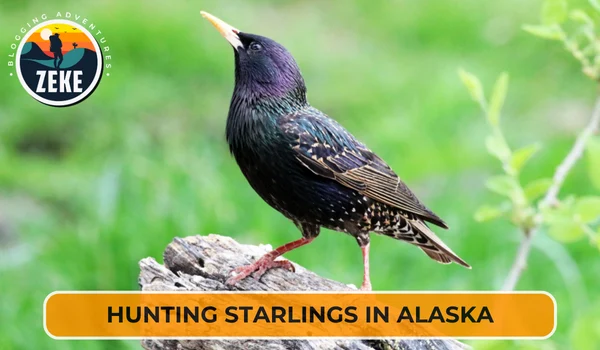
| Unit | Dates | Bag Limit |
| 1-26 | Open Season | ——- |
Raccoon Season
| Unit | Dates | Bag Limit |
| 1-26 | Open Season | ——- |
Quail Season
| Unit | Dates | Bag Limit |
| 1-26 | Open Season | ——- |
Pheasant Season
| Unit | Dates | Bag Limit |
| 1-26 | Open Season | ——- |
Squirrel Season
| Unit | Dates | Bag Limit |
| 1-26 | Open Season | ——- |
Turkey Season
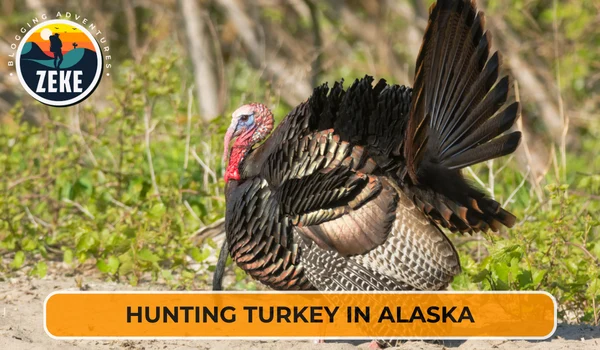
| Unit | Dates | Bag Limit |
| 1-26 | Open Season | ——- |
Partridge Season
| Unit | Dates | Bag Limit |
| 1-26 | Open Season | ——- |
Rodent Season
| Unit | Dates | Bag Limit |
| 1-26 | Open Season | ——- |
Belgian Hare Season
| Unit | Dates | Bag Limit |
| 1-26 | Open Season | ——- |
Alaska Hunting License Information
Alaskans aged 18 to 59 must obtain a hunting license and could require additional tags or permits for legal game hunting. For those 60 years and older, having a valid permanent ID card is enough instead of a license. Hunting licenses expire from the date of purchase to 31 Dec of the same year. You can get all the details you need on getting your hunting credentials from Alaska’s Fish & Game website.
Types of Alaska Hunting Licenses:
- Alaska Resident License: All Alaska residents between the age of 18-59 should get a hunting license. Permits or tags may also be required.
- Alaska Non-resident License: Every person who doesn’t live in Alaska must obtain a non-resident hunting license. You might also need extra tags, stamps, or permits.
- Youth Hunting License: Residents of Alaska who are 17 years old or younger don’t need a hunting license. But they have to finish a hunting education course or be with an adult who has a hunting license.
- Senior Hunting License: If you’re 60 years old or more and live in Alaska, you can get a special card for free to go hunting. This card has a number that you can use instead of a hunting license number. But you still need to buy any permits you might need.
- Disability License: Hunters with physical disabilities are qualified for special hunting services. You need to visit the official Alaska Fish and Game website for more information.
- Military & Veteran License: If you’re in the military and live in Alaska, you can get a free hunting license each year. Veterans who live here and have a disability connected to their service might also get a free license.
Where to Hunt in Alaska?
Alaska is the biggest and most underpopulated state in America, spanning an area of 1.7 million square kilometers. With half of its population living in Anchorage Metropolis, the rest of Alaska consists mostly of federally owned public land – including millions of acres worth of national forests, parks, and wildlife sanctuaries. Let’s check out some of the best places for hunting in Alaska.
Public Hunting Places in Alaska
Denali National Park
Hunting in Denali National Park is a dream come true for any hunter. This pristine wilderness area provides an unrivaled Alaskan experience, offering the chance to take on some of North America’s most majestic game animals – from caribou, and moose to Dall Sheep and grizzlies. But before you set out into the wilds of Alaska, it’s important to note that hunting in Denali is strictly regulated by federal law.
You must have a valid Alaska hunting license in order to hunt legally here; different species may be hunted at different times throughout the year, so make sure you check beforehand.
Kodiak National Wildlife Refuge
The Kodiak National Wildlife Refuge is on Kodiak Island in Alaska. It’s a good place for people who live there and people visiting to go hunting. You can hunt animals like moose, deer, bears, and waterfowl there. It has lots of big animals, so it’s a great spot to hunt them.
Cordova
Cordova is a place of varied terrain – from rocky mountains to rolling hills, lush forests, and wetlands. At its east lies the Copper River Delta, an iconic destination for waterfowls in their migratory journey. To the west, you’ll find yourself at Prince William Sound thanks to the tranquil Gulf Coast.
Rainy days are commonplace here so be sure to pack your best gear when exploring this area. Its vast wildlife also includes moose, black and brown bears, Sitka deer, and mountain goats that can all be sighted around town during certain seasons of the year.
Kenai National Wildlife Refuge
The Kenai National Wildlife Refuge is a pristine wilderness located on Alaska’s Kenai Peninsula. Home to abundant wildlife such as moose, caribou, Dall sheep and bears – it also offers visitors the opportunity to hunt for game like these plus waterfowl, small mammals and more.
To ensure a successful outing here, you must take time to get to know all local laws before going out into nature.
More places for hunting in Alaska include the Eastern Arctic region, Lake Clark National Park and Preserve, Bristol Bay, and Yukon–Kuskokwim Delta.
Private Hunting Places in Alaska
Alaska is a huge state, offering hundreds of thousands of private acres to explore. Hunting on privately owned land often means avoiding crowds and encountering animals that are more at ease with humans – although, in Alaska’s bountiful wilderness, this isn’t always the case.
